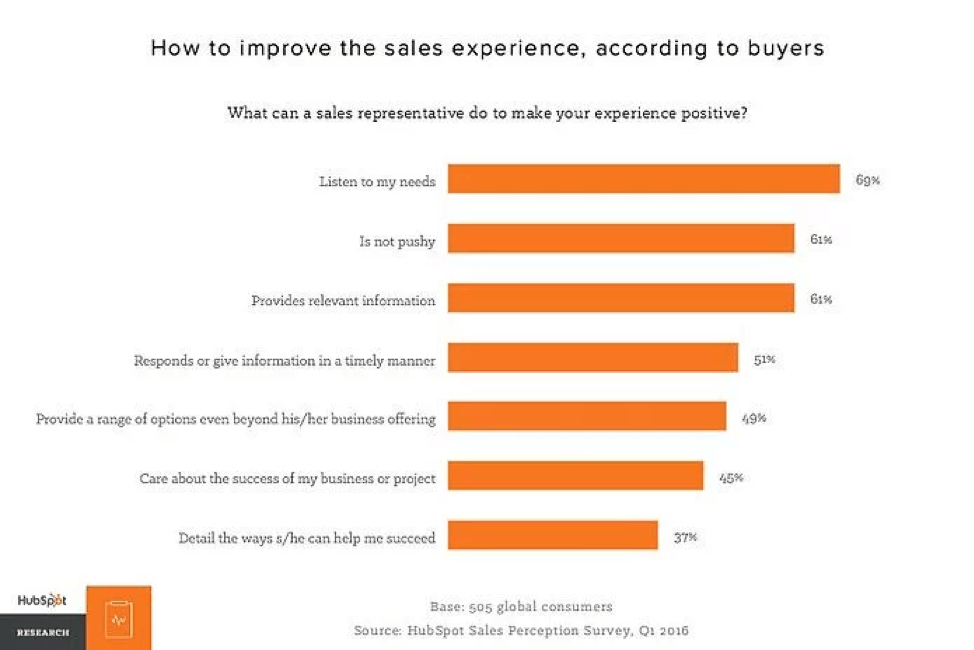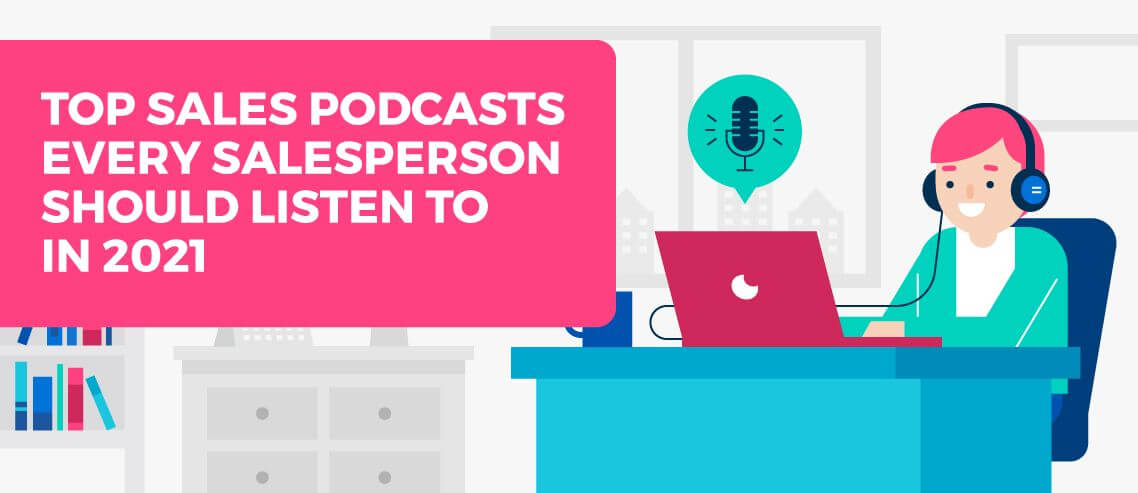Sales Prospecting Definition, Techniques, and Why It’s Important

Contents
Prospecting is hard work.
It’s long hours spent identifying prospects, writing emails and hammering the phones; much of it thankless.
Really, it’s no wonder that roughly two-fifths of reps say prospecting is the toughest part of the sales process (compared to a third who say it’s closing and a fifth who say it’s qualifying leads).
Part of the challenge with prospecting in the pressure of the situation. In most cases, stakes are high. Three in four companies generating fewer than 50 new opportunities a month fail to achieve their revenue goals, versus just one in 25 companies that bring in 101 to 200 new opportunities a month.
In other words? If your prospecting isn’t up to scratch, the chances you’ll hit your sales targets are pretty slim.
ol>
- What Is Sales Prospecting?
- Why is Sales Prospecting Important?
- Sales Prospecting Techniques
- Sales Prospecting Email Templates
What Is Sales Prospecting?

Sales prospecting is all about finding potential buyers or clients – also known as prospects – for your product and reaching out to them, with the aim of entering them into a sales funnel they’ll stay in until, hopefully, they’re ready to buy from you.
That’s why good prospecting is so essential: the better you are at finding prospects whose needs and pain points are met by your product, the more likely you’ll to convert them into sales down the line.
Importantly, “prospect” and “lead” aren’t the same thing, and they shouldn’t be used interchangeably. Every prospect is a lead, but not every lead is a prospect:
- A lead is a potential customer who’s shown interest in your product; for example, they might have signed up for your newsletter, downloaded an ebook, or read your latest blog post. But they aren’t necessarily a good fit for you right now. Conversation with leads tends to be pretty one-sided – they might read your content, but don’t expect them to get in touch or respond to your emails. They’re effectively strangers on your mailing list.
- A prospect, on the other hand, is a lead who does fit your buyer profile, has the necessary budget, and is interested in what you have to say.
Why is Sales Prospecting Important?
To understand why sales prospecting is important, you need to understand the sales process and how people make buying decisions.
Joe Latchow, Lead Development Manager at Intelligence North America, shares four primary reasons you need to master sales prospecting.
RELATED: The Modern Salesperson’s Guide to B2B Sales Prospecting in 2019
1. Fill Your Pipeline

Sales prospecting is the lifeline that keeps your business growing.
“Pipeline is lifeline” is a saying that I keep top of mind each and every day I report into the office. Working for a SaaS company now, I sit within Marketing and I’m in command of our internal sales teams.
We develop pipeline in a variety of ways, but the main areas of focus for us are
- Our website “Contact Us” form
- Phone-in leads from those who contact our corporate number
- Our inside sales efforts contacting MQL’s (Marketing Qualified Leads) and other companies in our sweet spot
If you don’t have a way of building pipeline, your sales teams are going to struggle.
Pipeline is invaluable to business growth because it explains what has been achieved, what is in process, and who you are targeting. It also holds your team accountable to projections. Without pipeline, none of this can be achieved, and without documentation of efforts and targets, your business will have more questions than answers.
It’s important to start small, so work internally to understand who your ideal customer is, build out your personas, and commit to KPIs that can be measured, reviewed, and adjusted as needed.
RELATED: The 10 Golden Rules of Effective Sales Prospecting
2. Become a Trusted Advisor
Being in sales prospecting is about much more than the title may indicate. In this role, you are a trusted advisor for the business you represent.
I loved becoming the SME (subject matter expert) on everything for clients, products, services, etc. Becoming an SME, though, is no easy task — and it’s not going to come overnight.
In addition to your prospecting efforts, you will need a focus on enablement and learning / development to keep your team sharp. If you’re not in the scaling process, don’t fret. You can have a frontline manager handle this until you can dedicate someone to a sales enablement function.
I remember getting countless callbacks from customers who had been with a product for years but would contact me back for trends, new findings, or even just to chat about their experience. They valued the personal touch I brought to their account and didn’t want that to go unnoticed. One business even wanted to send me a custom guitar; however, it would have been a violation of our contract with the client, so I had to respectfully decline.
Sales Prospecting allows your team to feel this, too. Each call, each email, each LinkedIn message is another stage for them to introduce themselves and provide value to the potential target.
3. Increase Productivity

Having a sales prospecting team allows for an increase in productivity.
First, when you track the results of their prospecting efforts in a CRM, you can identify their strengths and weaknesses. This allows you to find inefficiencies and optimize efforts over time.
Be aware, there are many good CRMs out there. If your budget is tight, there are even free CRMs that work well until you can afford a more robust option that has advanced reporting and features.
Second, you need a system of measurement that gives your team a central place to access the leads you are going after — even if it’s an Excel spreadsheet. (Don’t everyone cringe at once! You need something to keep you and your team motivated.)
RELATED: The Complete List of Sales Prospecting Tools
When I was calling, I viewed my production as a game. This was before gamification was even thought of. If I made 40 calls in a day, the next day I would shoot for 50, and then 60, and so forth.
Finally, you need a Sales Prospecting plan in place. Aside from the gamification mentioned above, this helps you hone in on your target / ideal customer, so you aren’t spinning wheels on prospects who not only aren’t a fit but, quite frankly, don’t matter to your business.
That’s not to say there shouldn’t be a “holding pen” for those. As those of us in sales know, the year ebbs and flows at certain points, and supplemental work can be extremely valuable.
Getting your team focused on the accounts that matter pushes them to make more calls and send more emails, mailers, etc. I can personally attest to this: I was always more willing to contact someone who fit the ideal persona than someone whose contact information we did a Google search for and only hoped was accurate.
4. Gain Competitive Insights
Sales Prospecting is an easy source of competitive insights.
These days, it rare to be the only option in your industry. Competition is stiff, and of course you want to know about the other brands your prospects are considering! The insights you gather from talking with your prospects can help you know precisely how to position your products and services.
I recommend creating play cards with your competitor’s advantages/disadvantages so your sales team is ready to speak to these points as they are come up in their sales discussions.
RELATED: How to Set Up a Winning Sales Cadence For Prospecting
It is important to note, it is in poor taste to “bash” or badmouth your competitors. Unfortunately, this was a lesson I learned the hard way. While selling financial services, I was quick to slander a top competitor, which immediately turned off my prospect. DO NOT BE THIS PERSON!
Instead, use the competitive insights you gather through sales prospecting to make your marketing campaigns more effective.
The bottom line; sales prospecting is vital to your businesses’ success. Not only does it keep your pipeline full, it positions you as a trusted advisor, boosts productivity, and gives you unique competitive insights.
Your pipeline is your lifeline. And sales prospecting is your best bet for keeping it healthy.
6 Sales Prospecting Techniques
Clearly, it’s vital that you get your prospecting house in order.
One piece of the puzzle is effort – you simply must be prepared to put the time in if you’re going to see results.
But beyond a bit of good old-fashioned graft, there are several legit techniques you can use to step up your prospecting game. Find a method that works, stick with it, and a steady stream of leads will follow.
1. Block Out Prospecting Time

Think back to your college days. You’ve got a big exam coming up, and you need to prepare. What are you going to do – carry your books around with you all day, every day, in the hopes that you’ll find time for an occasional 15-minute burst of studying? Or block out a chunk of time when you can sit down and be focused? Chances are the second option will produce the best results.
It’s no different with prospecting. Salespeople are constantly surrounded by noise, and there’s always something else you could be doing. Unless you make the time for prospecting, you won’t give it the focus it deserves. And if you’re not prospecting effectively, don’t expect the deals to follow.
Just be sure your blocks of prospecting time align with the periods in which your potential customers are likely to be available. If you’re going to reach out to them, you want to give yourself the best chance possible of receiving an immediate response.
2. Cash In On Your Existing Network
One of the key differences between the best salespeople and the also-rans? The desire to make their network work for them.
And why shouldn’t they? Once you’ve taken the time to build a strong relationship with a prospect and demonstrated that you can add real value for them, why wouldn’t you ask if you can do the same for their friends and colleagues?
It sounds so simple. And yet an astonishing number of reps are missing out.
Almost half of top-performing sales reps ask for referrals from their network on a consistent basis – either every day, or every time they’re in front of a prospect. That proportion drops to just one-quarter among reps who aren’t top performers. Non-top performers are also far more likely to admit that they “rarely” or “never” ask for referral business.
Referrals aren’t just a nice to have; the icing on the cake of a successful deal. They’re absolutely your most reliable source of new prospects. In the B2B world, companies with referrals enjoy 70% higher conversion rates and 69% faster close times. So if you’re generating referrals, you’re selling smarter.
3. Use Events to Your Advantage
In a world of programmatic ads, laser-focused social targeting, AI and machine learning, it’s easy to dismiss event marketing as outdated. No longer relevant. Not fit for purpose.
But that couldn’t be further from the truth. Event marketing is absolutely still effective, particularly when it comes to B2B sales. In fact, four in five marketers believe that live events are critical to the success of their company, while a majority believe it is their single most effective marketing technique.

One of the biggest benefits of event marketing is the ability to access to a guaranteed stream of people with similar interests. These are people who could become prospects – and, eventually, paying customers.
Of course, events aren’t a silver bullet. You can’t just expect to rock up to any old conference and expect prospects to line up to meet you. As a starting point, ask the following:
- Which events will have the highest proportion of prospects (and therefore potentially offer the best ROI)?
- Which sessions and network meetups should you attend at those events?
- What will your presence look like? Will you be speaking, or operating a booth?
- How will you stand out from the crowd?
4. Do Your Research
Let’s say you’ve got a job interview. You know who’s on the panel. So what are you going to do – leave it to chance and just wait to see what they’re like? Or do your research so you’ve got the best chance of understanding what they’re likely to ask you?
Unless you didn’t want the job in the first place, you’d always go with option two.
The same goes for prospecting. While your initial phone call or email might be your first contact with a prospect, that doesn’t mean it’s your first opportunity to find out about them and anticipate their needs.
A little research goes a long way. It can help you break the ice with your prospect, anticipate their pain points, and understand how your product can provide the solution. In other words, it can turn a cold call or email into one that’s… slightly warmer. And that means you can dispense with some of the basic questions you’d otherwise need to ask, and move straight onto the important business of adding value.
5. Don’t Sell, Build Relationships
The sales process is rarely about actual selling. If you treat every contact with your prospects as a race to close the deal, you’ll end up disappointed.
Arguably more than ever before, buyers are turned off by traditional sales tactics. Asked what sales reps can do to make the buying experience more positive, 61% of buyers say the rep shouldn’t be pushy.
So what should salespeople be doing? The same study found that 69% of buyers simply want the sales rep to listen to their needs. It might sound basic, but you’d be shocked how many reps fail to simply pay attention. A further 61% want salespeople to provide relevant information.

What can you learn from this? Building lasting relationships might seem like a luxury in the high-pressure sales environment, but you’re far more likely to deliver results if you can demonstrate that you’re trustworthy and able to offer genuine value to your prospects.
6. Get Active on Q&A Forums
An extension of the previous point; prospects want to know they can trust you. That you’re worth listening to.
That means if you can demonstrate that you offer genuine expertise in your subject area, prospects are far more likely to sit up and pay attention.
But you can’t just rely on waiting to develop a relationship with a prospect to prove you’re an expert. Buyers are busy, after all. That’s why you need to find new ways to educate your audience and highlight your skill set. One of the most effective is to get involved in Q&A forums – sites like Quora and the Moz Community are a good starting point, although the best sources depends on the industry in which you operate.
Prospects who see you in action on forums will recognize the value you can add. By the time you speak to them, you’ll already be several steps further along the buyer journey.
3 Sales Prospecting Email Templates

Understanding the best prospecting techniques is part of the battle, but it’s also vital that, when you reach out to a prospect for the first time, you do it right. Give yourself a head start by taking advantage of these tried-and-tested prospecting email templates:
1. Connecting With a Referral
Remember when I mentioned the importance of referrals earlier? When you’ve done the hard work of asking someone in your network for a referral, it’s essential that you take full advantage by sending an effective introductory email. Something like:
[ms_email_template id=4798 /]
2. Offering Advice & Insight
So you’re reaching out to a cold prospect for the first time. What’s your “in?” One of my favorite tactics is to demonstrate right off the bat that you have genuine value to add:
[ms_email_template id=4800 /]
3. Reference Their Content
Another fantastic technique for getting your prospects to sit up and take notice is to demonstrate that you’ve come prepared by referencing their own content. Something like this:
[ms_email_template id=4801 /]
Use these as a starting point, but put your own spin on them if you’re serious about making your sales prospecting techniques top-notch.





